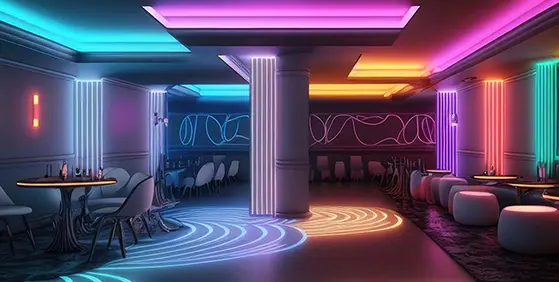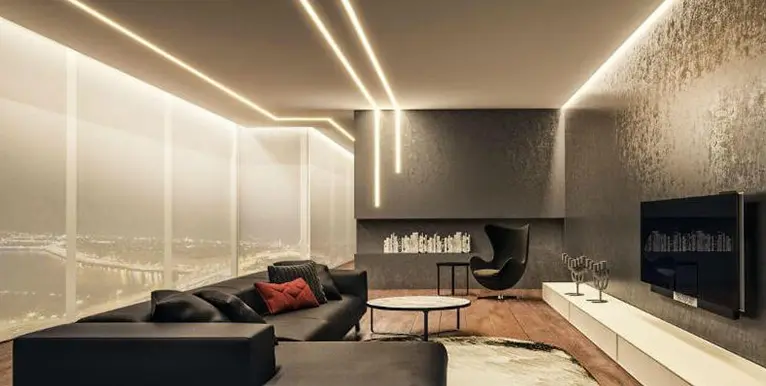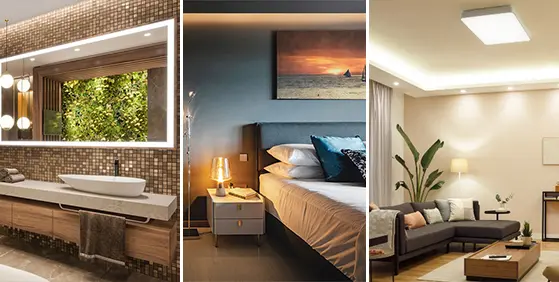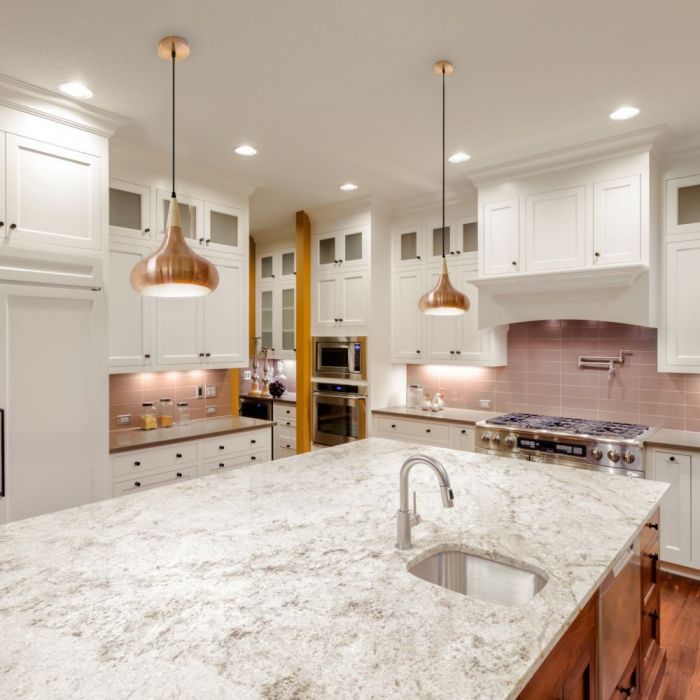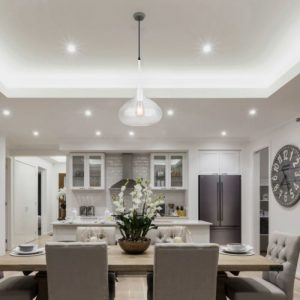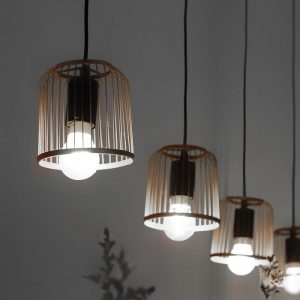We are spending more time at home than ever, so it should be no surprise that searches for ‘how to brighten a dark room’ are up by 62% from last year.
When we think of brightening a room, we might try fixes such as painting the walls lighter colours, adding mirrors or adding lighter furniture, but are we missing one of the most basic and crucial steps Julian Andriuta, CEO of Smart Lighting Industries explains one of the key elements of lighting that a lot of us might not be aware of.
When it comes to lighting, there are different designs, shapes, and types of installation to consider. One factor which is often overlooked, despite being essential, is colour temperature. According to the Kelvin Light Colour Temperature Scale, there are three main light colour options: warm white, day white and cool light.
Domestic lights will normally include lights with colour temperatures ranging from 2700K up to 6500K.
- Warm Light (2700K-3999K)
Warm light is perfect to create a warm, relaxing, and comforting atmosphere, perfect for spaces used for relaxing, such as living rooms, bedrooms and dining rooms.
Pendant lights, wall and ceiling lights, bespoke lights, floor and table lamps, strip lights, fan lights and vintage amber bulbs are all perfect lighting options for these rooms.
- Day White (4000K-4999K)
Neutral white lights are best used for active areas of your home, such as kitchen, bathroom and office, as well as hallways. Day white colour temperature will help boost concentration and will give you a brighter and more energetic feel.
Our product recommendations for day white lighting are panels, track lights, downlights, bespoke and strip lights, wall lights.
- Cool White (5000K-6500K)
Cool white colour temperature is very bright usually intended for commercial and industrial spaces. It is perfect for task lighting and improves concentration and productivity. It is most commonly used in schools, hospitals, industrial and commercial units.
However, this colour temperature could still be used at home in your working areas, for example in a mini-workshop or office, especially as more people are working from home currently.

Linear lighting, bespoke lighting, panels, led tubes, downlights and track lights are the best options to achieve cool white lighting in your home.
Brightening a room can be a mammoth task, one which can involve major renovations. However, if you don’t have the time or budget to undertake a project of that scale there are some more attainable but very effective fixes you can look at.
The easiest way to brighten any room
For effective, general lighting, ceiling lighting is best. It uses less space, the light is able to spread evenly across the room, and there are a wide range of lighting fixtures available on the market: different shapes, sizes, designs, mounting types and colour temperatures.
If you want more atmospheric lighting, wall lights, table and floor lamps are great options. You can also dare to do a little bit of DIY, using LED strips and channels to personalize your lighting options and make something unique to your home.
A good thing to consider is the possibility of using dimmable led bulbs and fixtures. By using dimmable products, the light intensity can be changed and adapted to how the room is being used throughout the day.
Other options include directional lights such as rotatable downlights, spotlights and track lights or using indirect lights, which are lights that shine at the ceiling or walls as an addition to the existing lights.
Why diffusing light is so important?
Essentially, light-diffusing is just properly distributing light from different sources to suit the needs of a particular room. It is always better to use more lights with less intensity than to use a single, powerful light source. It avoids casting shadows, limits the glare effect, and provides a consistent luxury level across the room.
LED strips and LED fixtures produce very bright lights. In order to make them work for our homes, they come with polycarbonate, glass or acrylic diffuser to “even” the light output meaning they create distinctive lighting designs and proper room illumination.
The light bulbs which give the brightest light
It is essential to follow the manufacturer’s specification of the light bulb to get the best results from any bulb. The number of lumens measures the light bulb’s brightness. Usually, the lumen output is compared to the power consumption. A regular LED bulb gives around 80 – 120 lumens per watt.
Some new evolution series LED’s can provide more than 160 lumens per watt. This factor is very important in order to reduce electricity consumption, which the new evolution series LED’s do by half compared to regular LED bulbs and by 90% compared to classic filament bulbs.
The CRI (Colour Rendering Index) is a scale to measure the fidelity of the object’s colour lit by a light source. The recommended minimum CRI must be above 80 Ra. The ideal CRI is 100, which can be reached only by sunlight and other special lighting fixtures.
Achieving a natural light look in a dark room
Use as many linear lights as possible. The light position is an essential factor, and a combination of angles and directions will help achieve the best natural light effect.
The CCT (Colour Changing Temperature) Bulbs and LED stipe is a massive win, combined with the multicolour RGB lights (for adding a mood light).
How light impacts space
The right amount of light can impact any space in many ways. Correct light settings can improve productivity in factories, workshops, offices, and other workspaces. In commercial areas, the optimal lights with the right specifications can influence buyers’ decisions and improve sales.
A carefully selected warm light combined with designer light fittings can create a cosy and relaxing atmosphere in a restaurant or a hotel room, which will leave a good impression on the guests.
There are a number of important things to consider when tackling the issue of lighting a room, especially because there are so many different types of lighting options available, it’s not just a matter of ‘more light’ but ‘what sort of light’.
The psychology of lighting
Lee Chambers, Environmental Psychologist and Wellbeing Consultant highlight the importance lighting can have on our mental health, wellbeing and productivity.
When we consider the different factors that impact our wellbeing and our productivity, we rarely think of how lighting affects our ability to perform and our health. Firstly, we only have to look at how important light is for our mental wellbeing when we consider the impact of shorter winter days and seasonal affective disorder.
Light is also responsible for our serotonin and melatonin secretion, which has a role to play in our happiness and our sleep, which in turn impacts our cognitive focus, emotional balance and productivity. With light being an integral part of our circadian rhythmicity, ensuring you are exposed to enough light during waking hours, and then being mindful of blue light exposure in the evening, can give us the ability to feel better and work optimally.
Lighting has taken on an increased level of importance due to remote working. With the ability to create our own spaces to work from in our domestic environments, we have the ability to design our lighting to suit our needs. We all have our own environmental need for light, and finding that balance is an integral part of being able to work from home effectively.
If a room is too bright, it can become overstimulating, but during the winter, working near a window will play a big part in boosting your concentration, mood and motivation.
Before you start the task of tackling the lighting in your home, decide what sort of light (bright, atmospheric, motivating or calming) you want for that room. Once you have a clear picture in your head of what you want to achieve, it should be much easier to make decisions which will allow that to happen.

